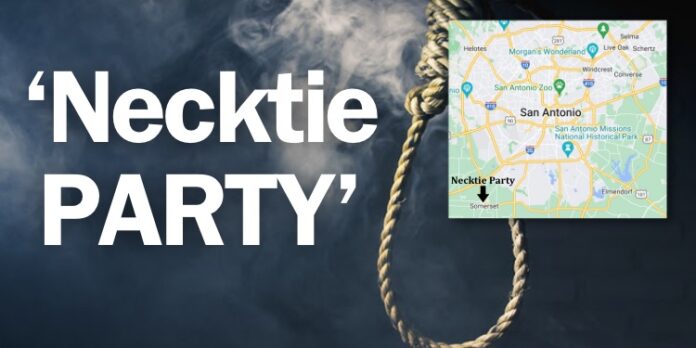The Horrors of Segregation
Today, and in the past, white supremacist horrors came in many forms. The San Antonio Municipal Auditorium (Now the Tobin Center) was segregated for many years as was the San Antonio Library, Joskes Department store, the local Woolworth, the hospitals, and the graveyards. A rope was placed down the center isle of the Municipal Auditorium by the San Antonio Fire Department, which separated “white” from “colored,” and was clearly marked with signs attached to the ropes. During the era of segregation, Blacks needed places to stay while driving across the country. Segregated restaurants, restrooms, gas stations, hotels, and other facilities were designated “white only.” As a result, a book was published by Victor H. Green called The Negro Motorist Green Book.
The Green Book helped Blacks to avoid white only establishments. San Antonio had several places listed: one at 1216 Dawson Street, 127 N. Mesquite Street, and another at 245 Canton Street. The book was written by Victor H. Green, and was available during the Jim Crow era. This work saved countless lives, for to go to a white only establishment during segregation often meant jail, brutality, torture, or death. This book and others were published for many years and provided safe spaces for Black people when traveling in a racist country. The Green Book was the work of Victor H. Green. It listed places where Black people could safely stay, attend events, get a haircut, or eat in San Antonio and across the nation. The book was updated yearly and began in 1936 and lasted until 1966. Segregation was no picnic and was a horrible institution that forced people to go to inferior places. Many Black segregated schools had poor textbooks and unqualified teachers and the food sold at supermarkets was of poor quality. Everywhere, the evils of segregation were evident even though Black people did their best to make life livable. We need to be clear that we were not better off under segregation or with integration.
According to the San Antonio Daily Express dated Oct. 13, 1886, the headline read,
“A Necktie Party. Negro Hung in a Tree for Wanting to Marry a White Girl.” It went on to report this news:
“News reached this city last night of a hanging at Somerset, in Atascosa County. On Sunday night last. The Negro is known as “Aleck.”
It appears that he wanted to marry a white girl living in the neighborhood, and had made indecent proposals to her. For this he was arrested and held under guard by four men, supposed to have been officers. Indignation against the rascal ran so high that on the night in question he was forcibly taken from the custody of the guard and hanged to the nearest tree until too dead to be of any service to his family or friends.” This horrible hanging took place just South of San Antonio in Atascosa County, which later became Bexar County. The name of the man hanged in Somerset was Alexander Washington and the killers went unpunished.
Segregation was used to justify murderous rampages of the time. It was common for blacks to be falsely accused of raping white women, or flirting with one, could result in death. Additionally, there are a number of documented stories that speak to the fact that white girls who engaged in unapproved sexual relations, with any man or boy, and when the father of the girl suspected this, the girl would blame a Black man or Black boy that lived or worked nearby in order to save her white boyfriend.






